Both the beef and dairy industries work hand in hand to contribute to the beef supply, but there is one industry sector uniquely positioned between both – veal.
Primarily raised in New York, Pennsylvania, Ohio, Michigan, Wisconsin and Indiana, veal is a meat derived primarily from young Holstein bull calves. Bull calves are typically sold shortly after birth through local auction markets or purchased directly by others who will raise them for beef or veal. There are two primary sources of veal: bob veal and formula-fed veal
Bob veal consists of dairy bull calves sold and marketed shortly after birth, while formula-fed, also known as milk-fed or special-fed, are dairy bull calves that are raised for about six months and harvested at approximately 500 pounds or more. Formula-fed calves also receive grain and are ruminating animals at the time of harvest. In the marketplace today, 68 percent of veal is derived from formula-fed/grain-fed veal calves.
Today, there are approximately 400 veal farms in the U.S., and many are Amish or Mennonite families. Each farm family raises about 400 head per year. Out of all the formula-fed calves marketed each year, 95 percent come from Veal Quality Assurance (VQA)-certified farms. All VQA certifications are verified by a veterinarian.
Ultimately, veal production supports the dairy industry by adding value to its calves and co-products.
The Beef Checkoff-funded VQA program is designed to ensure dairy beef animals raised and marketed specifically for veal receive a level of care that guarantees optimal health and welfare. In addition to being beneficial for veal producers, VQA helps grow consumer trust in veal production.
Seventy-four percent of consumers agree that food companies should be more transparent about their farming practices – this jumps to nearly 80 percent when asking Millennials alone1. This statistic shows the importance of giving consumers complete clarity on the production practices of veal farming.
The VQA program makes it possible for Beef Checkoff contractors to share credible and ethical stories when marketing veal to consumers.
The Beef Checkoff-funded National Veal Program is managed by Checkoff contractor North American Meat Institute (NAMI) and subcontractor New York Beef Council (NYBC). This team produces multiple Checkoff- funded promotional campaigns and develops educational pieces, both intended to increase consumers’ discovery and trust in veal. The consumer-facing brand, Veal – Discover Delicious, capitalizes on veal’s unique taste, value and versatility. Veal is distinctive in the meat space because a three-ounce serving of cooked, trimmed lean veal has just about 170 calories, making it one of the most nutrient-dense protein foods around.
Also, veal provides 29 percent of the recommended daily intake of zinc, 36 percent of niacin and 23 percent of vitamin B-12. In short, it provides a fat and calorie profile similar to chicken but with the nutrient density of beef2.
To spread the word about veal’s extraordinary nutrition package, Veal – Discover Delicious focuses on reaching new Millennial audiences with exciting promotional efforts. Millennial consumers today continue to have little awareness or knowledge of veal as a meat choice.
All promotional efforts address this knowledge gap with messaging that explains how to find and access veal while building confidence in the protein’s taste, nutrition and safety.
Forty-five percent of consumers report shopping online for groceries more now than before the pandemic3, and online shopping has remained popular into 2022. To reach the online shopping community, Veal – Discover Delicious partners with Chicory, a digital shopper marketing platform that turns recipes into a retail environment by reaching consumers through an online recipe network. While reading through online recipes, consumers can add veal directly to their virtual shopping carts with a quick click on advertisements with retailers like Instacart and Publix. Campaigns with Chicory last year have resulted in more than nine thousand veal orders. Additionally, Fresh Direct is another online retailer that Veal – Discover Delicious works with and has resulted in more than one thousand orders of veal last year. If consumers can’t find veal in their local store, Veal – Discover Delicious hosts online retailers on its own website where consumers can buy veal and have it delivered right to their door.
Another tactic Veal – Discover Delicious utilizes to effectively reach Millennial and younger audiences and first-time veal eaters is leveraging influencers.
These influencers highlight veal’s versatility and flavor in recipes while incorporating information about how veal is raised and the faces behind veal production. Influencers then share this messaging on their blogs and social media platforms. Many influencers also coordinate or participate in veal cooking classes. This is an educational opportunity for all audiences to learn more about veal and how to best prepare it. Many of these events have themes, like the best recipes for Valentine’s Day or a Kentucky Derby party.
The National Veal Program also hosts events like veal farm tours, both in-person and virtually. Beef industry stakeholders and supporters join these tours to learn about veal farming practices, discover more about the protein and get a chance to ask industry experts their questions directly. Farm tours are only one way the National Veal Program is creating veal advocates and growing consumer trust in veal production.
Over the summer, a new video campaign was launched to introduce consumers to modern veal farming. Featured on social media and Google advertisements, this video series engaged with consumers on what veal is, what veal calves eat and how they’re raised. To watch the videos, visit www.veal.org/discover-the-farm.
Although small, veal plays a significant role in the U.S. beef and dairy industries, and the Beef Checkoff actively works to share the progressive message of veal’s protein strength, versatility, transparency and sustainability.
To learn more about the National Veal Program and access educational resources, visit: Veal.org.
Today, TikTok is a social media giant and a highly relevant social media platform, particularly for Gen Zs and millennials. With more downloads than even Facebook and Instagram, TikTok has more than 800 million monthly users worldwide. Because TikTok features so many key target audiences active in one space, the Beef Checkoff has joined in on the fun, promoting prepared beef and veal in unique and trendy ways.
The North American Meat Institute (NAMI) executes Checkoff-funded projects to promote prepared beef products. One goal is to get consumers to think about prepared products, like beef hot dogs, roast beef, corned beef and beef jerky in new and different ways – and TikTok is a platform where consumers embrace creativity. The food side of TikTok is one of the most popular and trending areas on the app. Here, users can find at-home, professional and celebrity chefs. To capitalize on food’s popularity on TikTok, NAMI ran three campaigns with the Food Renegades, the largest alliance of social media chefs in the world with 40 million followers combined.
The Checkoff-funded brand Veal – Discover Delicious has also been using TikTok to showcase veal’s versatility. Veal – Discover Delicious partnered with popular TikTok food creators to introduce veal to consumers and open their eyes to new recipe concepts.
These TikTok tournaments and highly engaging campaigns have brought out the originality in food creators. Prepared beef products were shown in shakshuka, Reuben casserole and even beef hot dog octopuses. Also, veal was highlighted in different burger and taco recipes.
The Beef Checkoff is excited to be working on new TikTok campaigns for the future and is consistently monitoring new technologies and platforms to continue reaching and engaging new audiences to drive demand for beef.
When consumers think about veal, they likely think that fancy, Italian, white-tablecloth restaurants are the only places that serve veal nowadays. The Beef Checkoff is changing that narrative and promoting veal as a nutritious, delicious option for any consumer.
The Checkoff-funded National Veal Program, executed by the New York Beef Council and the North American Meat Institute (NAMI) developed a new brand and website to invite consumers to “Discover Delicious” in veal.
Veal – Discover Delicious, integrates the former vealmadeeasy.com and vealfarm.com platforms and was developed with veal stakeholders’ input. The website features upcoming events, blog articles and cooking school information. Veal producers and other industry stakeholders can use the site to see extensive consumer outreach efforts. This website also shows consumers where to buy veal online, in butcher shops or at grocery stores.
Along with this website launch, the brand has several other ongoing campaigns and events. Here’s a program snapshot:
 Family Features Campaign Highlights Veal’s Versatility – This social media and digital-focused campaign with Culinary.net uses veal as a popular and trending recipe ingredient for families. One new recipe was a buffalo baked veal cutlet sandwich. To date, this campaign has 725 total placements across the country in print media, online and social media networks, totaling 68,183,494 impressions.
Family Features Campaign Highlights Veal’s Versatility – This social media and digital-focused campaign with Culinary.net uses veal as a popular and trending recipe ingredient for families. One new recipe was a buffalo baked veal cutlet sandwich. To date, this campaign has 725 total placements across the country in print media, online and social media networks, totaling 68,183,494 impressions.
Veal Wins Big on Chicory Promotion – An important goal of veal’s outreach is to touch different and new consumers, making them aware of veal as a protein option and how it can fit into their weekly meal choices. One way this was accomplished was through a campaign with Chicory, a digital shopper marketing platform that turns recipes into a retail environment and reaches consumers through an online recipe network. Consumers had the opportunity to add veal directly to their virtual shopping carts with the click of a button. Beef Checkoff dollars invested in this campaign were doubled by contributions from other brand partners, such as Victoria’s Pasta Sauce. Brand partners were complementary to veal, allowing consumers to see veal in a cooked application. The overall campaign was then supported by the Florida and Wisconsin State Beef Councils. This campaign ran from mid-February to mid-March, and at the second performance report in early March, there were more than one million impressions and 2,531 veal orders were added to baskets.
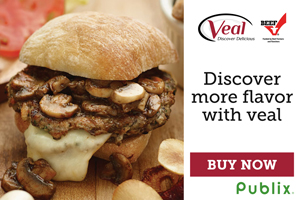 Consumers Gather for the ‘Love of Veal’ – Nine consumers joined both in-person and virtually from around the nation to take part in a veal cooking experience with Chef Patrick Rae and a wine tasting with Laurie Forster. The class taught consumers how to make two veal recipes with a romantic theme for Valentine’s Day. There was a 45 percent increase in comfort level among the participants in cooking veal following this class. Overall, participants gave the class 4.5 stars. More consumer cooking classes are planned for the rest of the year.
Consumers Gather for the ‘Love of Veal’ – Nine consumers joined both in-person and virtually from around the nation to take part in a veal cooking experience with Chef Patrick Rae and a wine tasting with Laurie Forster. The class taught consumers how to make two veal recipes with a romantic theme for Valentine’s Day. There was a 45 percent increase in comfort level among the participants in cooking veal following this class. Overall, participants gave the class 4.5 stars. More consumer cooking classes are planned for the rest of the year.
“SO enjoyed your For the Love of Veal virtual cooking class last night! I appreciate you taking the time to ‘de-mystify’ beef industry practices regarding veal, and I followed along with Chef Patrick’s instructions to make veal marsala, green beans and fingerling potatoes.” – Participant feedback.
National Collegiate Veal Cooking Competition – State Beef Councils in Wisconsin, Indiana, New York, Arizona and Florida connected with their culinary institutes and students to extend the opportunity to be a part of the State and National Collegiate Cooking Competition. Students take the time to learn about veal production and then create a recipe of their own design for a consumer audience. One winner from each state will receive a scholarship prize and compete at the national level for additional scholarship money. There has been a 125 percent increase in State Beef Council participation in this program since 2019.
This March, the North American Meat Institute (NAMI), a contractor to the Beef Checkoff, is executing exciting new efforts to celebrate National Deli Meat Month. Determined to “beef up” the month-long celebration, NAMI is turning National Deli Meat Month into an American favorite.
Growing National Deli Meat Month is key to expanding consumer demand for prepared beef – and research shows deli meat is extremely valuable to the beef industry.
 Nielsen data from 2019 shows that meat items sold beyond the fresh meat department have a value of $23 billion, with $13 billion coming from the deli department. Additionally, The 2019 Power of Meat Report states that in a given month, shoppers were buying meat across the store, including 37 percent in the deli, 39 percent fully cooked and 49 percent frozen.
Nielsen data from 2019 shows that meat items sold beyond the fresh meat department have a value of $23 billion, with $13 billion coming from the deli department. Additionally, The 2019 Power of Meat Report states that in a given month, shoppers were buying meat across the store, including 37 percent in the deli, 39 percent fully cooked and 49 percent frozen.
Ultimately, research has shown that consumers turn to deli meats, especially during unprecedented times. One remarkable data point tracked by 210 Analytics and IRI, a market research and data analysis company, in the first weeks of the global pandemic in March 2020 was that deli meat sales jumped as high as 40 percent over sales during the same week in March 2019.
To build upon consumers’ desire for deli meats, NAMI set a strong foundation for National Deli Meat Month in 2020. To do this, NAMI partnered with the National Pork Board (NPB) to create an entirely new campaign to promote and advance National Deli Meat Month. Together, an outreach campaign was directed to retailers, health professionals, dietitians, restaurateurs and consumers, encouraging them to enjoy their favorite deli meats and reminding them they can feel good about these popular cuts’ nutritional benefits.
This effort’s centerpiece was a newly created website –www.nationaldelimeatmonth.org – which provides a multitude of new resources including logos, messages, infographics, fact sheets, nutrition information and the latest news. Combined, these efforts reached consumers more than 600 million times and engaged more than 350,000 key opinion leaders. Partnering with the NPB helped generate momentum around National Deli Meat Month.
Throughout March, this momentum helped increase consumer demand for deli meats. The industry is now well-positioned to effectively grow National Deli Meat Month and adopt a long-term commitment to build upon each year.
Similar to past years, efforts to reach key audiences included press releases, television segments, eblasts, print ads and personal contact with top nutrition communicators. To upgrade things in 2021, NAMI and NPB developed more partnerships, created more activity opportunities and engaged with more retailers, health professionals, dietitians, restauranteurs and consumers than ever before. New assets, including an online toolkit complete with communication and activation ideas for retailers and producers, are available to inspire customer engagement and promotion at both the store and community levels.
A significant outreach effort to members, retailers and appropriate restaurants, like Subway and other sandwich chains, encouraged them to promote National Deli Meat Month – either using the existing materials or creating their own supporting activations. Additionally, NAMI has forged a new partnership with the International Dairy Deli Bakery Association (IDDBA) to extend this outreach and engagement to their membership, including more than 1,500 companies ranging from small independents to the world’s largest corporations.
To take advantage of fun, innovative virtual happenings, NAMI and NPB are executing Deli Dinner “Meat” & Greets. Building off of NAMI’s first Hot Dog Zoom Happy Hour success in 2020, Deli Dinner “Meat” & Greets will feature nutrition communicators and big brands as a way to encourage a break from the long-held image of deli meat as only lunch and sandwich options.
Also new this year is a National Deli Meat Month TikTok promotion. NAMI has seen great success through TikTok in the past year, and it plans to grow prepared beef’s presence on the platform. In partnership with The Food Renegades, a division of The Digital Renegades digital marketing agency and a chef alliance on TikTok, NAMI and NPB will be launching an exciting effort for National Deli Month that includes leading influencers sharing their enthusiasm for deli meats.
Overall, as National Deli Meat Month moves into its second year of promotion, NAMI is confident these efforts are only just the beginning, and consumers’ love of deli meat will continue to grow.
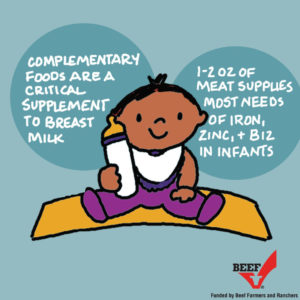 To prove beef’s role in a healthy diet, the Beef Checkoff is actively involved in human nutrition research to understand and communicate science-based information that supports beef consumption. One recent research finding is currently generating a buzz within the nutrition community – “Babies should eat meat, like beef.”
To prove beef’s role in a healthy diet, the Beef Checkoff is actively involved in human nutrition research to understand and communicate science-based information that supports beef consumption. One recent research finding is currently generating a buzz within the nutrition community – “Babies should eat meat, like beef.”
A growing body of scientific evidence illustrates the beneficial role of beef’s nutrients for physical and cognitive development in a child’s early years. Also, for the first time ever, the 2020-2025 Dietary Guidelines for Americans committee addressed the need to provide authoritative guidance regarding nutrition recommendations for children from birth to 24 months of age. Specifically, the committee recommended animal-sourced foods, such as beef, as a foundational food to support healthy growth for infants and toddlers.
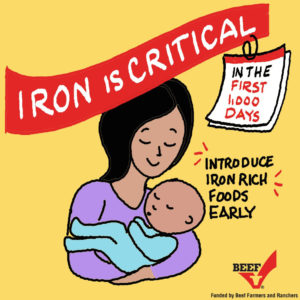 To increase awareness of the scientific evidence supporting beef as a first food for infants amongst health professionals and researchers, the National Cattlemen’s Beef Association (NCBA), a contractor to the Beef Checkoff, hosted a virtual event this past fall. “Eating in the Early Years E-Vent: An Immersive Virtual Experience on Beef’s Role in Early Childhood Nutrition” highlighted the importance and value of nutrition, health and feeding in the first 24 months of life. Leading child nutrition and feeding experts, internationally recognized nutrition researchers, healthcare specialists, childcare professionals and government agency nutrition representatives all tuned in to learn more about beef.
To increase awareness of the scientific evidence supporting beef as a first food for infants amongst health professionals and researchers, the National Cattlemen’s Beef Association (NCBA), a contractor to the Beef Checkoff, hosted a virtual event this past fall. “Eating in the Early Years E-Vent: An Immersive Virtual Experience on Beef’s Role in Early Childhood Nutrition” highlighted the importance and value of nutrition, health and feeding in the first 24 months of life. Leading child nutrition and feeding experts, internationally recognized nutrition researchers, healthcare specialists, childcare professionals and government agency nutrition representatives all tuned in to learn more about beef.
This learning experience was initially planned as an in-person event for just 30 healthcare professionals. However, after it went virtual, more than 1,275 health professionals were able to attend and learn the science behind recommending beef as a first food. The E-Vent featured live educational sessions focused on nutrition recommendations for infants and toddlers, panel discussions with leading nutrition and feeding experts and shareable social media illustrations highlighting key takeaways from each session.
O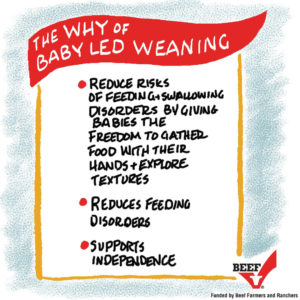 verall, at least 80 percent of respondents said the sessions’ value and quality were excellent/above average.
verall, at least 80 percent of respondents said the sessions’ value and quality were excellent/above average.
This event strengthened science-based advocacy among nutrition researchers, pediatricians and credentialed nutrition influencers, increasing the likelihood that they would recommend beef consumption during infancy and early childhood. The Beef Checkoff also hopes to inspire new research that supports beef consumption due to this event.
Childhood nutrition is a popular topic amongst parents and health experts, and the Beef Checkoff will continue to raise awareness about the importance of eating beef in the early years.
Visit the Eating in the Early Years E-Vent home page for more information about the event and educational resources.
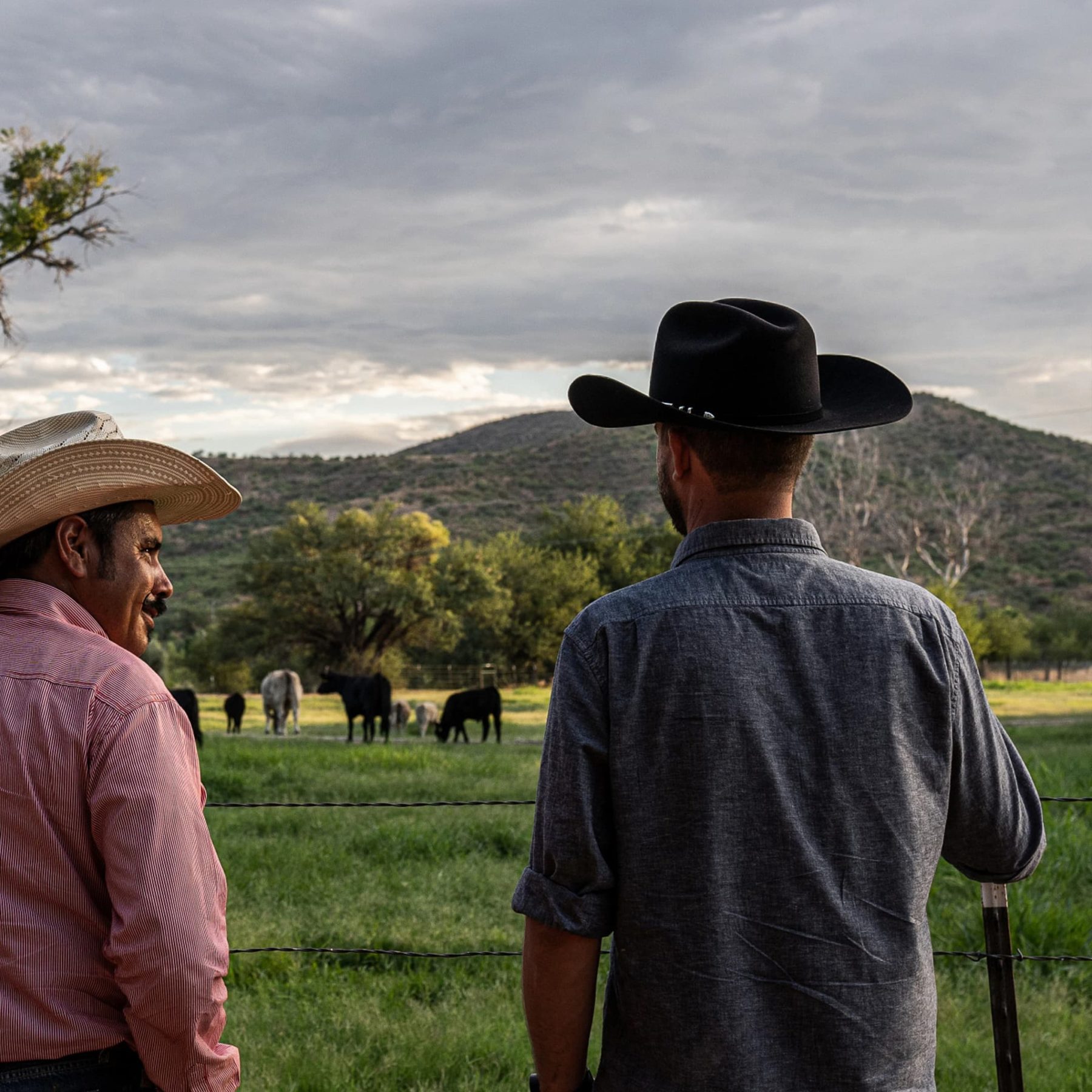
Chefs and restauranteurs can have a significant impact on the beef industry’s success. Those who choose beef can develop new beef recipes that support beef demand, and they often act as beef advocates and representatives. They’re committed to delivering the high-quality beef their customers love – that’s why it’s essential they’re educated and confident in today’s beef production practices.
The Checkoff-funded Beef. It’s What’s For Dinner. brand, managed by the National Cattlemen’s Beef Association (NCBA) in partnership with Chef’s Roll, a global culinary community, developed a unique and new video series to bring beef producers and chefs together. This video series takes chefs directly to the ranch, teaching them about cattle’s lifecycle and the process from pasture to plate. These chefs get a first-hand look at the care producers who follow the Checkoff-funded Beef Quality Assurance program put into producing high-quality beef. This series then shows the producers’ experiences as they tour the chefs’ restaurants to see how some of their most popular and complex beef dishes are made.
The three videos were shared with the Chef’s Roll culinary community through multiple social and digital channels, with their Instagram posts reaching nearly 800,000 culinary professionals. Through this video effort, thousands of chefs across the country are now enlightened on environmental stewardship, cattle handling techniques, quality control and animal welfare priorities. Watch as producers and chefs work together to deliver high-quality beef.
Executive Chef Ryan Clark of Casino Del Sol and Santa Fe Ranch Manager Dean Fish
Executive Chef Kathryn Mathis of BackdoorBBQ and feedyard manager Tom Fanning
Executive Chef Mark Keiser of Oak Steakhouse and 3rd generation cow-calf owner & farmer Kristy Arnold
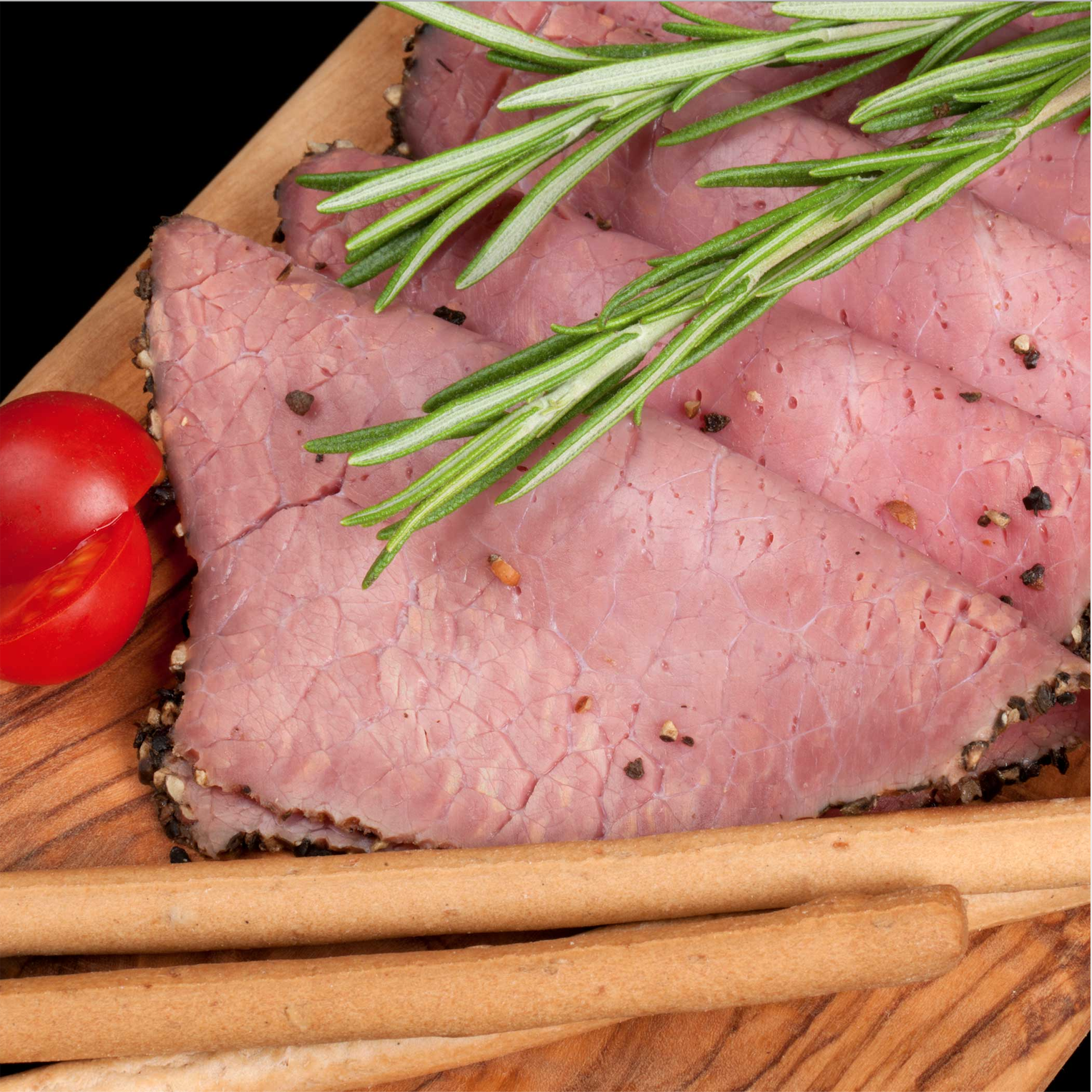
The Beef Checkoff’s efforts to position prepared beef as a nutritious option for any lifestyle.
“Processed” or “prepared” – both words describe ready-to-eat or ready-to-cook meats like hot dogs, beef jerky, deli meats and more, but which term sounds more appealing and resonates more positively with consumers?
According to research conducted by the North American Meat Institute (NAMI), a contractor to the Beef Checkoff, “prepared” is by far the winning synonym. Consumers have a positive association with prepared meats, and 78 percent of those surveyed specifically say they would be more likely to purchase prepared meats over processed meats, and 71 percent say prepared meats are more healthful than processed meats.
This research was key for NAMI to determine the proper course of action to promote and strengthen prepared beef’s benefits. Numerous studies and the Dietary Guidelines for Americans affirm that prepared beef can be part of a healthy, balanced diet. These products provide consumers with a convenient and balanced dietary source of proteins, vitamins and minerals.
Through influencer relations, entertaining promotional campaigns and product innovation, NAMI advances prepared beef and changes the way consumers talk about these products.
In further prepared beef nutrition research, FMPRE has a number of priorities. First, it wants to establish a risk-benefit analysis on the consumption of further processed beef as a component of a healthy lifestyle. FMPRE will also prepare comprehensive white papers to assess what is currently known about processed beef consumption and identify any potential data gaps on the mechanistic development of cancer in humans for processed beef components. Finally, the foundation will conduct menu modeling that demonstrates the role of further processed beef in the healthy dietary patterns identified in the 2020 to 2025 Dietary Guidelines.
One specific FMPRE white paper, A Guide to Meat Processing for the Nutrition Community, serves as a guide for nutrition experts and the scientific community. This white paper assesses how meat is processed, common categories of processed meats and their characteristics, the meaning of different labeling claims and an overview of the nutritional benefits of meat consumption and public health implications.
In fiscal year 2021, FMPRE is soliciting and reviewing at least 15 different technical proposals on beef research. The foundation can directly apply research outcomes to help create a safer product and demonstrate how prepared products are safe, nutritious and fit in a healthy diet. Learn more about FMPRE’s research efforts here.
Whether it be communicating to consumers or the scientific community, the Beef Checkoff’s prepared beef research and promotion help position beef as a whole, the number one protein of choice.
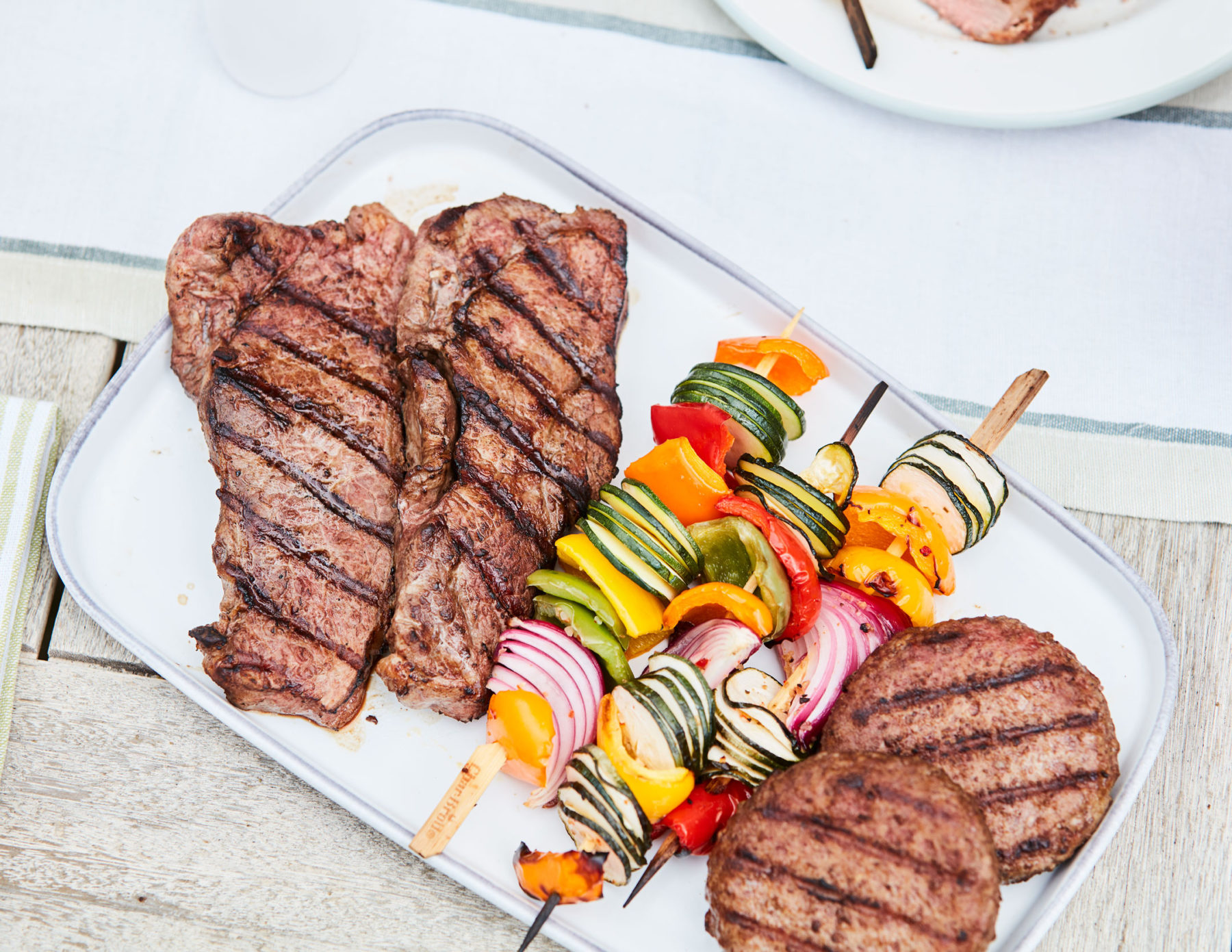
Every five years, the U.S. Department of Agriculture (USDA) and Health and Human Services (HHS) work together to update and release the Dietary Guidelines for Americans (Dietary Guidelines.) Each edition of the Dietary Guidelines reflects the most current nutritional science and advises consumers on what to eat and drink for better health and reduced risk of chronic disease. The 2020 to 2025 Dietary Guidelines for Americans Advisory Committee (DGAC) is comprised of 20 health and nutrition experts who are responsible for developing the recommendations for the USDA and HHS. The Dietary Guidelines provide a roadmap for healthy eating and serve as the foundation for federal nutrition programs; school, military, hospital and nursing home menus, and many other expert nutrition recommendations.
Because the Dietary Guidelines has a significant influence on consumer eating habits, the Beef Checkoff works diligently to ensure beef is well represented in this publication. For the most recent edition, the National Cattlemen’s Beef Association (NCBA), a contractor to the Beef Checkoff, submitted 21 sets of public comments and more than 100 research studies supporting beef’s role in a healthy diet.
The comments submitted to the DGAC on behalf of the Beef Checkoff reviewed the scientific evidence on the following topics:
When the Beef Checkoff submits research to be considered in these guidelines, it is actively fighting for consumers to understand that beef is a reliable dietary choice for those wanting to live a healthy lifestyle. To view a list of the comments submitted to the DGAC by NCBA, on behalf of the Beef Checkoff, visit www.beefresearch.org
Also submitted were gold-standard research studies that further reinforce beef as an important source of high-quality protein for Americans of all ages. These studies included Checkoff-funded research demonstrating how lean beef can be the protein of choice in many healthy diets, including the popular Dietary Approach to Stop Hypertension (DASH) diet and Mediterranean Diet. Other submitted studies – like the BeefWise study – showed that low-carbohydrate and higher-protein diets including lean beef can help people lose weight while maintaining muscle mass and heart health.
One of the most recent studies, conducted by Kevin C. Maki, Ph.D., at Indiana University, was published in May by the Journal of Nutrition. Researchers studied 33 participants, 26 women and 7 men who were at risk for Type Two diabetes. They measured the participants’ cardiometabolic risk factors at the end of each feeding phase and compared each individual’s factors throughout the trial. Half of the participants followed the USDA healthy eating pattern of up to 1.2 ounces of red meat per day 2. The remaining participants began a similar pattern that contained an additional 5.3 ounces of lean, unprocessed beef per day in place of refined starches. The study’s critical takeaway was that individuals have the flexibility to include up to about six ounces of lean, unprocessed beef in daily healthy diets without increasing risk factors for heart disease or diabetes.
This study proves beef can be a part of a healthy diet and gives consumers the flexibility to include more lean unprocessed beef in their daily diets. The Beef Checkoff will continue to support cutting-edge nutritional research with leading scientists at universities and research institutions to understand beef’s role in health.
As passionate beef advocates, Team Beef members promote beef’s health benefits and are firsthand examples of athletes leading active and healthy lifestyles fueled by lean beef. Members not only rely on lean beef when preparing to run road races but also incorporate it as a staple in their diets to help fuel the day-to-day rigors of life, family and work.
Avid runner and Northeast Team Beef member, Carole Stevenson of Edgewater, NJ, is a shining example of how lean beef plays an essential role in one’s diet. Stevenson currently relies on lean beef as a source of sufficient energy for long days caring for COVID-19 patients.
Stevenson works as a physician assistant (PA) in three different hospitals close to the U.S. coronavirus epicenter in New York City. On a typical day before the pandemic, Stevenson would manage the surgical and trauma patients: ortho, vascular, plastics, general surgery and trauma patients in the ICU. With the spread of COVID-19, she is now primarily caring for COVID-19 patients in the ICU.
“It is a whole new world, and it’s been an adjustment to wear N95 masks the entire 12-13 hour shift,” Stevenson says. “Those are in addition to the rest of the hazard gear that’s easily donned – hats, gowns, goggles and gloves.”
The hospitals where Stevenson works are overflowing with COVID-19 patients; every person in the ICU is on a ventilator and in critical condition, many with failing kidneys and in need of dialysis. “The hospital feels and looks like a war zone,” Stevenson says. “The operator is overhead paging staff to respond to cardiac arrests, decompensating patients and other emergencies on a way-too-frequent basis.”
Community support helps Stevenson stay positive. The food deliveries and uplifting cards, notes and posters she receives tell her she’s not alone in this fight. Looking forward to the future, Stevenson is excited to accomplish her running goals, meet up with her running friends and continue advocating for beef.
Read more about Stevenson’s Team Beef experience and her work as a COVID-19 patient caretaker.